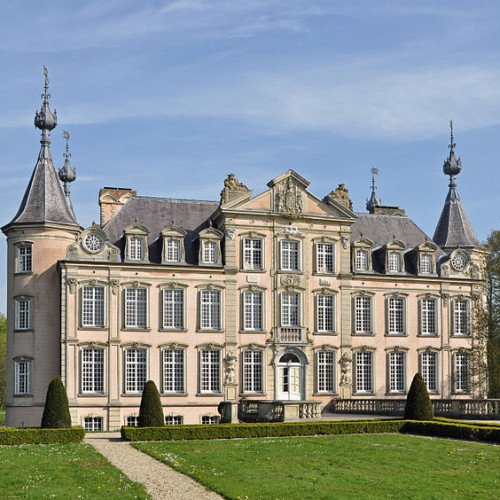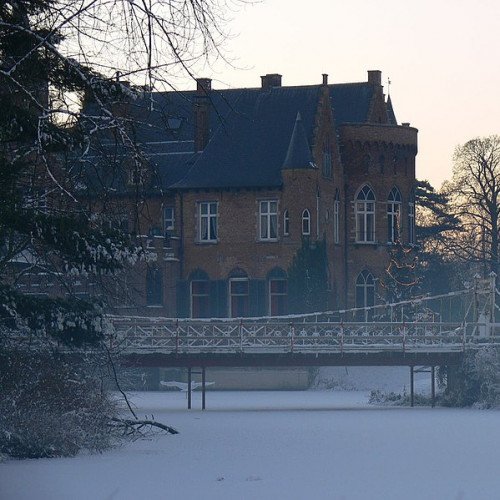Castles of "Belgium" POEKE CASTLE vs WISSEKERKE CASTLE

POEKE CASTLE
Poeke Castle (French: Château de Poucques, Dutch: Kasteel van Poeke) is a castle near Poeke, a small town in the municipality of Aalter in the Belgian province of East Flanders. The castle, standing in 56 hectares (140 acres) of park, is surrounded by water and is accessible through bridges at the front and rear of the building. Poeke Castle is situated at an elevation of 15 meters. It is unknown when the first fortification was constructed at Poeke, but references to it appear from 1139 onwards. The castle played a prominent role during the conflict between Count Louis II of Flanders and the city of Ghent in 1382. In the same year Eulaard II of Poeke died at the battle of Beverhoutsveld when he attempted to stop the Ghent militia, who by then had already taken his fort. The lords of Poeke were loyal vassals of the Counts of Flanders, with whom they also intermarried: Anastasia van Oultre, the second wife of Eulaard III of Poeke, for example, married as her second husband Robert of Flanders, illegitimate son of Louis II of Flanders.
Statistics for this Xoptio

WISSEKERKE CASTLE
The Wissekerke Castle is situated in the village of Bazel of Kruibeke municipality in the East Flanders province of Belgium. Although a castle stood at this site since 10th century, the present castle was largely built in the 15th century with lake, park and a suspension bridge. The suspension bridge by the castle is one of the oldest surviving wrought iron suspension bridges in Europe and was designed in 1824 by Jean-Baptiste Vifquain, an engineer from Brussels. Many famous people lived at Wissekerke castle, including the influential family of Vilain XIIII. For 139 years the members of this family were the mayors of Bazel. Through the centuries the castle has been rebuilt and renovated. The most important building works were completed in the 19th and 20th centuries. Most of the present architecture recalls 19th century neo-gothic style. The major interior features also date from this period. The castle, the gatehouse, the iron suspension bridge and the pigeon tower were listed as monuments in 1981. In 1989 the castle was purchased by the town of Kruibeke, which has since handled the restoration work. The castle is also venue to many cultural activities, tours and exhibitions. In spite of the modest span of 23 meters, the bridge is of great industrial archaeological value, because of its historical and structural uniqueness. Since 1981, the bridge at Bazel has been a protected historic monument.